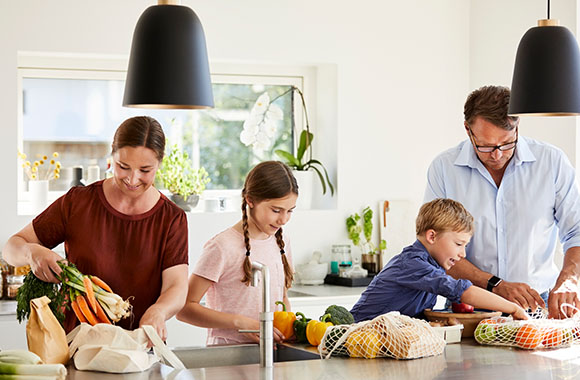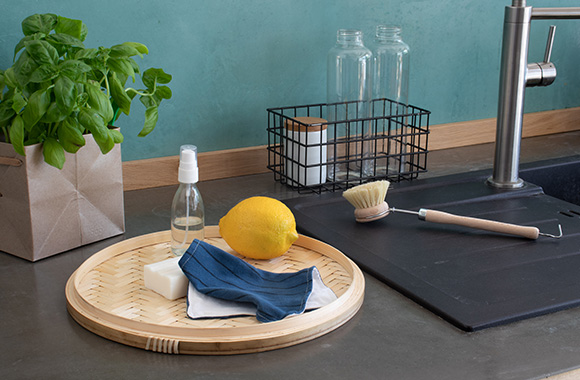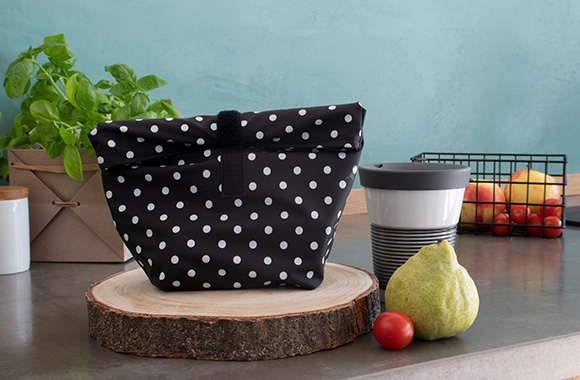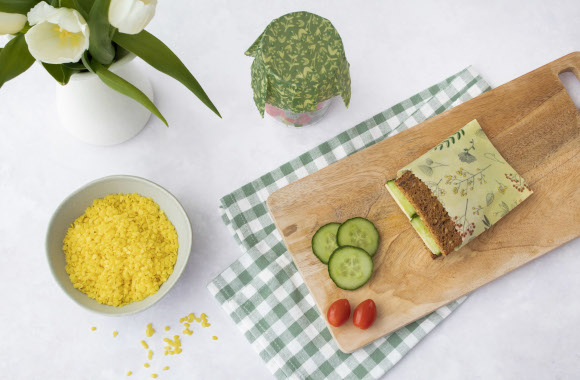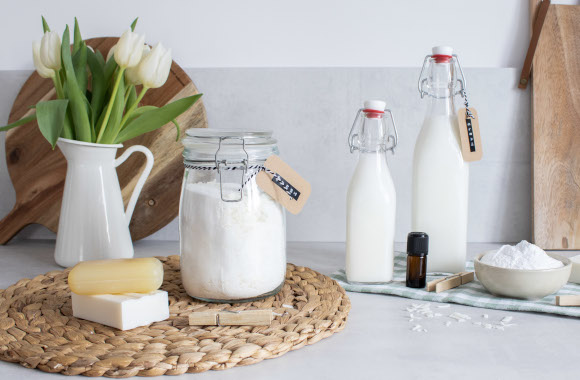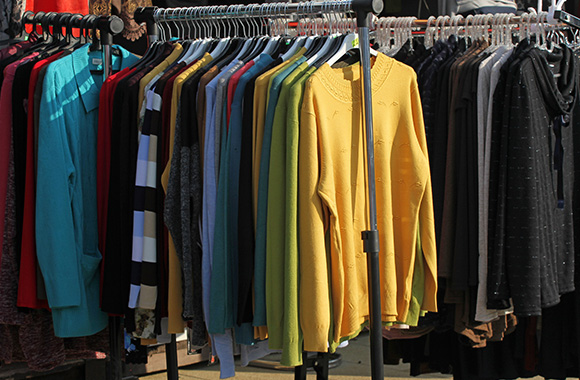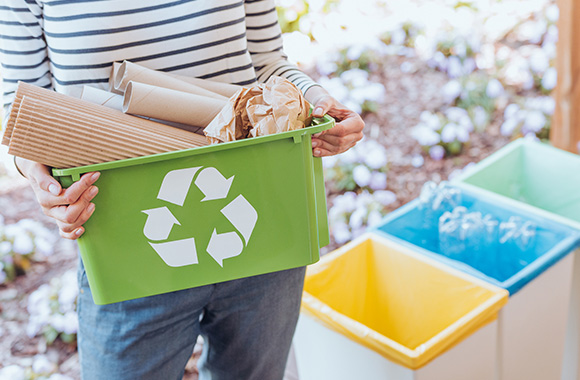Get creative in the kitchen by making your own reusable bowl covers
Aluminium foil and cling film are used by most people for to cover bowls and containers without lids. They are also used to wrap loose food. As a disposable product foil causes a lot of waste. With our upcycling ideas you can replace some disposable products with upcycled clothes.
Try and use less disposable paper towels by making your own upcycled kitchen towels out of old clothes such as t-shirts or blouses. With the help of an old raincoat, you can reduce the amount of foil or clingfilm used in your home. You could also dispose of all foil and clingfilm and become one step closer to a zero waste lifestyle by using the DIY bowl covers. Here in just a few easy steps you can learn how to make DIY bowl covers from an old raincoat.
DIY instructions on how to make a bowl cover
An old raincoat is great for making an airtight seal on bowls, pots or other containers. Raincoats are usually water-permeable, which is ideal to keep your food fresh. In addition, the cover can be easily washed. To make a raincoat into a useful and reusable cling film replacement, you will need the following tools:
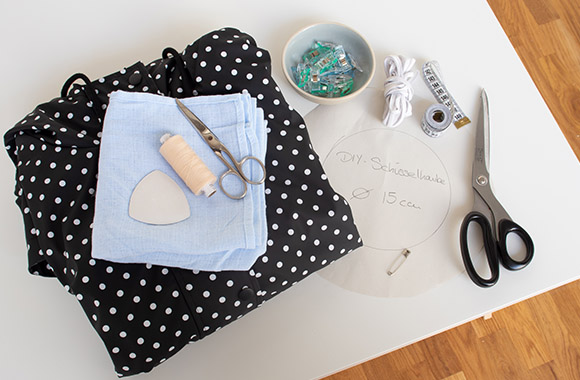
Your sewing tools checklist for your DIY bowl cover
- Raincoat
- An old cotton t-shirt or blouse
- Matching thread
- A drawstring that matches the circumference of the bowl
- Bowl
- Fabric scissors
- Measuring tape
- Fabric pegs instead of pins
- A sheet of paper and a pen
- Wooden stick
- Safety pin
You’re almost ready to start your sewing project once you’ve got all your tools ready for upcycling your raincoat.
Step-by-step sewing instructions for the bowl cover
Firstly, take your old raincoat and other cotton garments. Cut around the seams to separate them into individual pieces. This will give you a good idea of how many reusable bowl covers you can make from the raincoat.
Next, you will need to make a template. Place the bowl upside down on a sheet of paper. Outline the bowl with a pencil and add an extra 5 cm for the seam. You can reuse this template as many times as you like. If you are only making one, you can trace the outline directly onto the fabric.
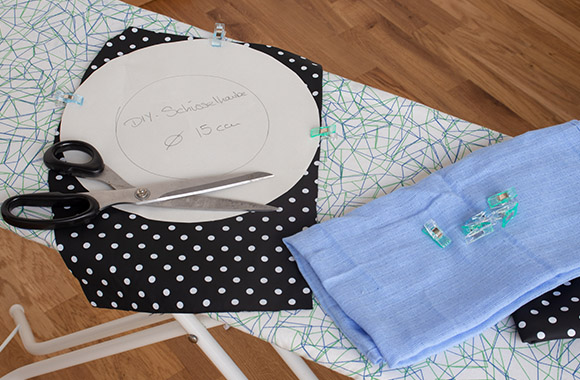
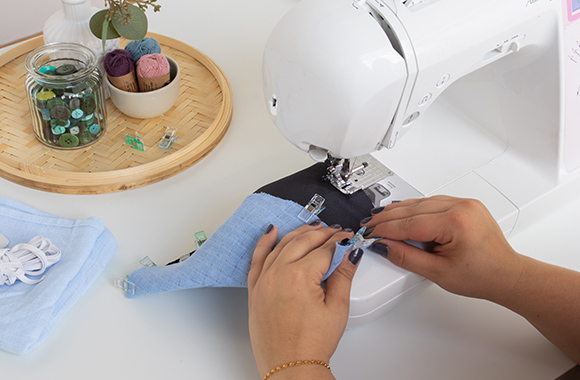
Lay both the raincoat and cotton garments on top of each other. Then cut around your template or the line on the fabric. Then put the two layers together by using fabric pegs.
Next, sew around the edge of the pattern and leave a 1 cm gap. The two pieces of fabric should be right next to each other. This means that the front side of the two fabrics are facing each other. Leave an opening of around 4 cm to turn it inside out at the end. Back stitch both ends to prevent the seam from coming apart. To do this, sew backwards after the first, three or four stitches and then sew forwards again so that you have sewn over the same place three times. Now you should be at the end of the seam. Repeat this step again at the end of the seam.
Do not use pins to hold the fabrics together. Pins will damage the inner lining of the raincoat and this could affect your bowl cover.
Do not use pins to hold the fabrics together. Pins will damage the inner lining of the raincoat and this could affect your bowl cover.
Next step: Turn the bowl cover inside out. To do this, pull the inside out through the opening.
Before turning it inside out, it is helpful to nip the edges of the excess fabric every two to three centimetres. This will prevent any tension, which can create creases.
Before turning it inside out, it is helpful to nip the edges of the excess fabric every two to three centimetres. This will prevent any tension, which can create creases.
Use a wooden stick or the back of a wooden spoon or a chopstick to find the edge after turning it inside out.
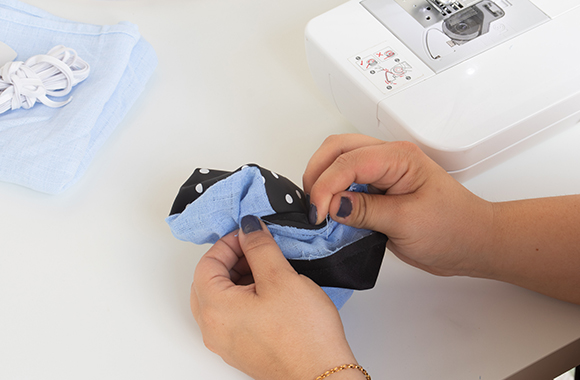
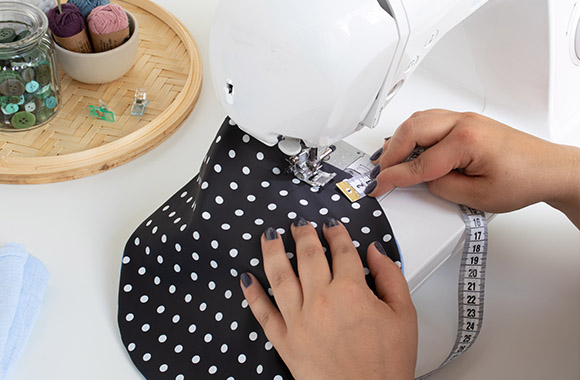
Sew in a drawstring around the cover. This should be at least as wide as the sewing machine presser foot. To measure this, use the edge of the presser foot as a guide by placing the edge of the fabric against the edge of the foot. If your drawstring is wider, you will need to increase the distance between the seam and the outer edge of your stitching. This time, you can sew all the way around. As long as you join the top and bottom of the stitching, you don’t have to back stich.
Now attach a safety pin to the drawstring to pass it through the loop you have just sewn. Then place the cover on the bowl and knot the two ends of the drawstring together. You can choose how tightly you want the cover to fit.
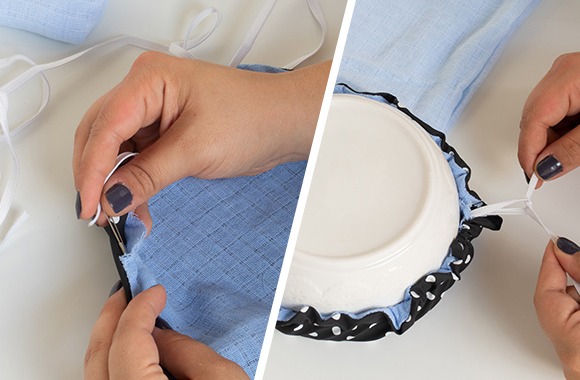
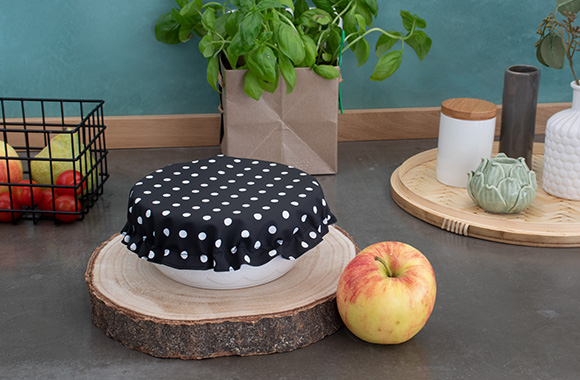
The final step is to close the small opening used for turning inside out. Make sure the edge of the fabric is on the inside of the DIY bowl cover. Then stitch along the opening and let the needle move as close as possible to the outer edge of the fabric. Your reusable cling film replacement is now ready to use.
Conclusion
Waste prevention is easy: With a little creativity and skill your old clothes may come in handy whilst reducing waste and helping the environment in the process. Our DIY bowl covers are washable and look much better than aluminium foil or cling film. If you have some fabric leftover check out our sewing guide on DIY cloths or try your hand at making a DIY bread bag. True to the motto ‘Make something new out of something old’, you can make your household more sustainable and environmentally friendly through such upcycling projects.


